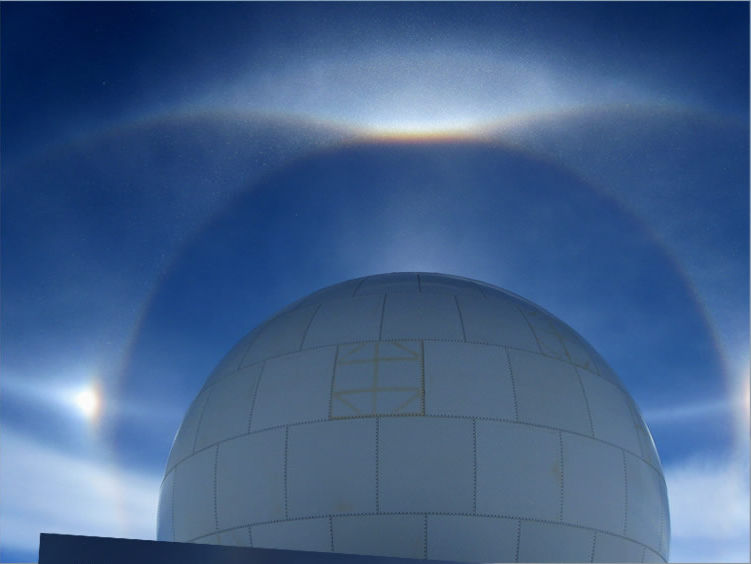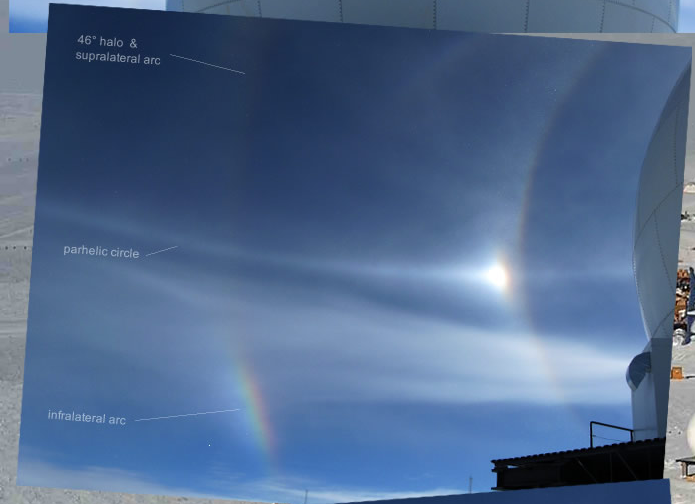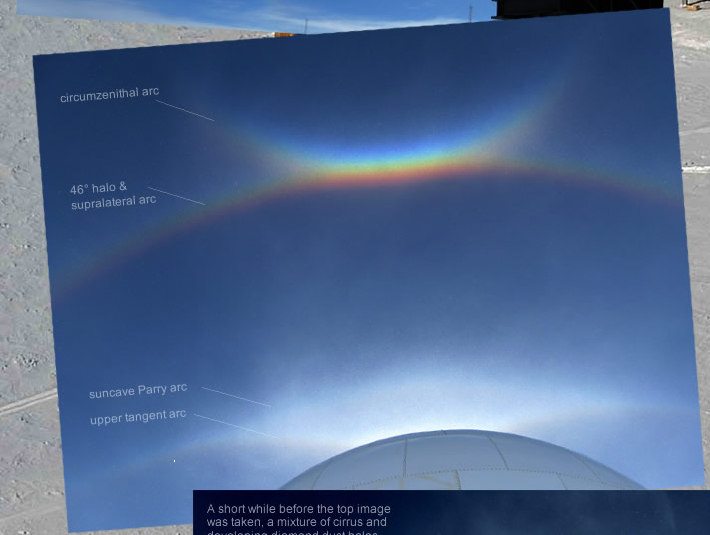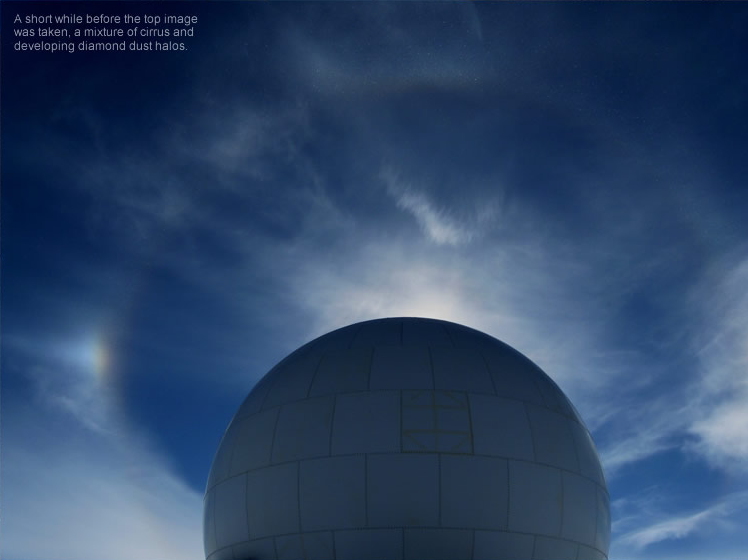Midsummer South Pole Halos
Midsummer South Pole Halos: A Spectacular Natural Phenomenon
At the South Pole, a mesmerizing natural spectacle unfolds during midsummer - an array of dazzling halos that captivate the eye and leave observers in awe. These halos, created by the interplay of sunlight and ice crystals in the atmosphere, form intricate patterns and colors that are truly breathtaking. While the South Pole is known for its extreme cold and harsh conditions, it is also home to some of the most remarkable atmospheric optics displays on Earth.
One striking image captured at the South Pole shows diamond dust particles creating a magnificent scene. Blazing sundogs, which are bright spots on either side of the sun, are connected by a parhelic circle, an upper tangent arc, and a suncave Parry arc. The combination of these halos produces a stunning visual spectacle against the backdrop of the polar landscape.
But this is just the beginning. As we explore further, we discover more enchanting halos that grace the skies at the South Pole. Let's take a closer look at some of them:
-
46° Halo: This halo forms a perfect circle around the sun at an angle of 46 degrees. It is caused by the refraction and reflection of sunlight through hexagonal ice crystals.
-
Infralateral Arc: Appearing as a colorful arc below the horizon, this halo is created by sunlight interacting with horizontally oriented plate-shaped ice crystals.
-
Supralateral Arc: Situated above the horizon, this halo mirrors the infralateral arc and is caused by similar ice crystal orientations.
-
Circumzenithal Arc: A captivating upside-down rainbow-like arc that arcs across the sky, created by light refracting through horizontally aligned ice crystals.
The South Pole's unique geographical location and extreme weather conditions make it an ideal setting for these extraordinary atmospheric displays. The absence of light pollution and the uninterrupted expanse of the polar sky enhance the visibility of these halos, allowing for truly awe-inspiring observations.
The phenomenon of diamond dust, which plays a significant role in the creation of these halos, occurs when tiny ice crystals are suspended in the air near the ground. These crystals act as prisms, bending and scattering sunlight to produce the mesmerizing optical effects we witness.
It's important to note that these halos are not exclusive to midsummer at the South Pole. They can also be observed in other polar regions during certain times of the year. However, the extreme conditions and unique atmospheric dynamics at the South Pole contribute to particularly intense and captivating displays.
As scientists continue to study and understand atmospheric optics, these natural phenomena serve as a reminder of the beauty and complexity of our planet's atmosphere. The South Pole halos offer a glimpse into the intricate interactions between sunlight, ice crystals, and Earth's atmosphere, leaving us in awe of the wonders that nature has to offer.
So, if you ever find yourself at the South Pole during midsummer, take a moment to gaze at the sky and witness the extraordinary display of halos that grace this remote and remarkable corner of our world. It's a sight that will leave an indelible impression on your mind and a newfound appreciation for the wonders of our natural environment.

Halos at the South Pole imaged by Nick Powell December 29, '08.
©Nick Powell, shown with permission.
The dome houses satellite communications for the Amundsen-Scott Station and serves here to block the 23° high midsummer sun's direct rays.
The very best of natural halo displays are to be found at the South Pole. In the top image, diamond dust has produced blazing sundogs linked by a parhelic circle, an upper tangent arc and a suncave Parry arc.
Browse lower for more halos: 46°, infralateral, supralateral and circumzenithal arcs..



A short while before the top image was taken, a mixture of cirrus and developing diamond dust halos.
Note: this article has been automatically converted from the old site and may not appear as intended. You can find the original article here.
Reference Atmospheric Optics
If you use any of the definitions, information, or data presented on Atmospheric Optics, please copy the link or reference below to properly credit us as the reference source. Thank you!
-
<a href="https://atoptics.co.uk/blog/midsummer-south-pole-halos/">Midsummer South Pole Halos</a>
-
"Midsummer South Pole Halos". Atmospheric Optics. Accessed on April 20, 2024. https://atoptics.co.uk/blog/midsummer-south-pole-halos/.
-
"Midsummer South Pole Halos". Atmospheric Optics, https://atoptics.co.uk/blog/midsummer-south-pole-halos/. Accessed 20 April, 2024
-
Midsummer South Pole Halos. Atmospheric Optics. Retrieved from https://atoptics.co.uk/blog/midsummer-south-pole-halos/.